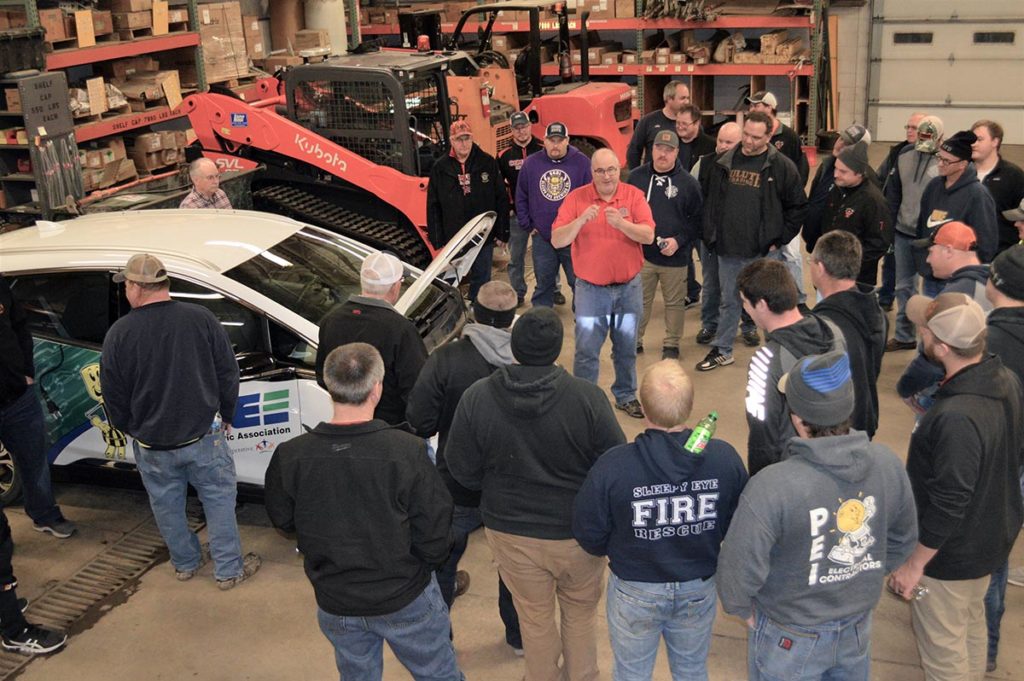
Minnesota’s electric cooperatives have been hosting electric vehicle safety training for first responders throughout the state to help dispel misconceptions about EV dangers and boost the confidence of drivers and emergency crews.
Great River Energy, a Maple Grove-based generation and transmission co-op, worked with its member-owner co-ops to host more than two dozen training sessions over the last year for local fire departments and other first responders.
More than 1,200 firefighters, emergency medical technicians and police officers from over 200 agencies have attended the evening training, which lasts about three hours and provides hands-on experience with EVs. Great River Energy, which has about 5,000 EVs in its territory, started the training last December and will continue through January.
“We were thinking about creative ways to get in touch with people who aren’t driving EVs,” said Rodney De Fouw, Great River Energy’s member electrification strategist. “We kept hearing about first-responder organizations that didn’t have good information about EVs. With more EVs hitting the road, we thought this was a good opportunity to educate people.”
To conduct the training sessions, Great River Energy reached out to Jack Volz, a longtime volunteer firefighter and owner of Safety and Security Consultation Specialists. The Minnesota Lake-based company has been providing various types of safety training to first responders for a decade.
Volz said safety information about EVs was sparse, so he contacted vehicle manufacturers to gather more knowledge about what first responders should do if an EV is involved in an accident or fire.
Volz said that, despite misconceptions, getting electrocuted from an EV is “almost impossible to do.”
Most EV manufacturers install a simple wire loop that first responders can cut with scissors to disconnect the battery, Volz said. They even mark the loop with a yellow tag with a picture of scissors on it. If an EV ends up in a lake or other body of water, the entire battery system shuts down and it doesn’t short out, he said.
The battery is encased in a metal shell and, if it catches on fire, it can be cooled with water poured over the shell, Volz said. He said people often use way too much water to extinguish a battery fire. EV manufacturers provide emergency response guides with detailed information about how much water is needed to put out a blaze, Volz said.
EV fires happen much less often than fires in gas-powered vehicles, he said.
“There will be one EV fire in California and one in Vermont and one in Texas and all of those make headlines all over the nation,” he said. “Internal combustion engine fires happen every day all day and rarely make the news.”
EVs are also less likely to roll over in car accidents because of the weight provided by the batteries located on the bottom center of the car, Volz said.
There was some initial concern that Great River Energy might inadvertently scare people away from EVs by holding EV safety training, De Fouw said.
“But it helps to get good information out into the community instead of letting misconceptions grow,” he said. “By training first responders, we’re making things safer for people who drive EVs and we’re spreading accurate information to others. Anybody who is going to buy an EV wants to know that people are going to be there to help them if they need it.”
Erin Kelly is a staff writer for NRECA.